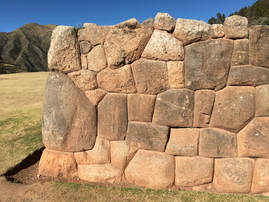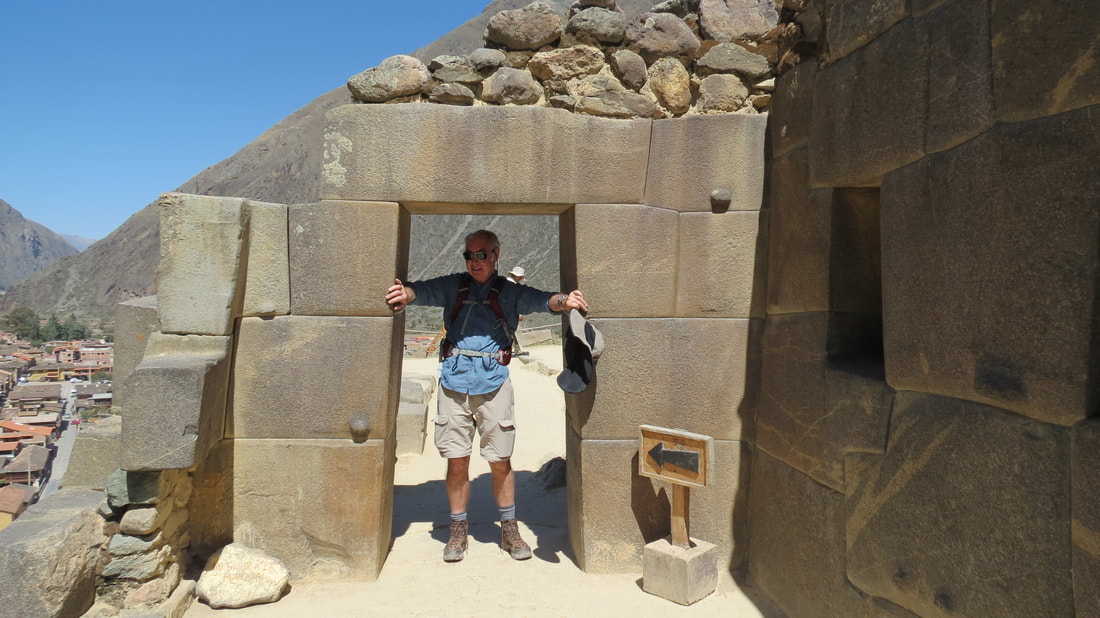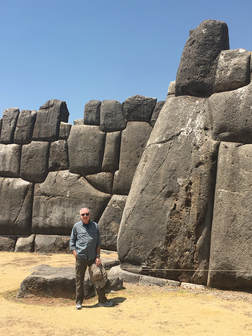 Inca ruins at Chinchero. The top of the wall has been recreated.
Inca ruins at Chinchero. The top of the wall has been recreated. The individual blocks in the walls are never square - some of them feature many angles to make them fit the irregular shapes of the adjoining stones. One twelve-angled stone on Huton Rumiyac Street in Cusco is famous but there’s another at Macchu Picchu with even more angles. Windows and doors are trapezoidal in shape. The doorway below is in the ruins at Ollantaytambo in the Sacred Valley. The quality of the work indicates that ordinary people could not pass through this doorway. To get the massive stones (such as the one in the lintel) up to the site, the Inca used earthen ramps and rollers.

 Massive stones at Sacsayhuaman.
Massive stones at Sacsayhuaman. At Machu Picchu there are some clues as to how the walls were created. In a quarry there you can see blocks of granite in the process of being shaped. Some have holes where wooden wedges were driven in to widen the cracks until the rock split. In one wall you can see a rock in the act of being shaped. Beneath it is a stone roller used to roll the rock into place when the shaping was finished. I was so awed by the stone masonry I took many, many photos. Click through the slide show below to see some more great examples.
 RSS Feed
RSS Feed
